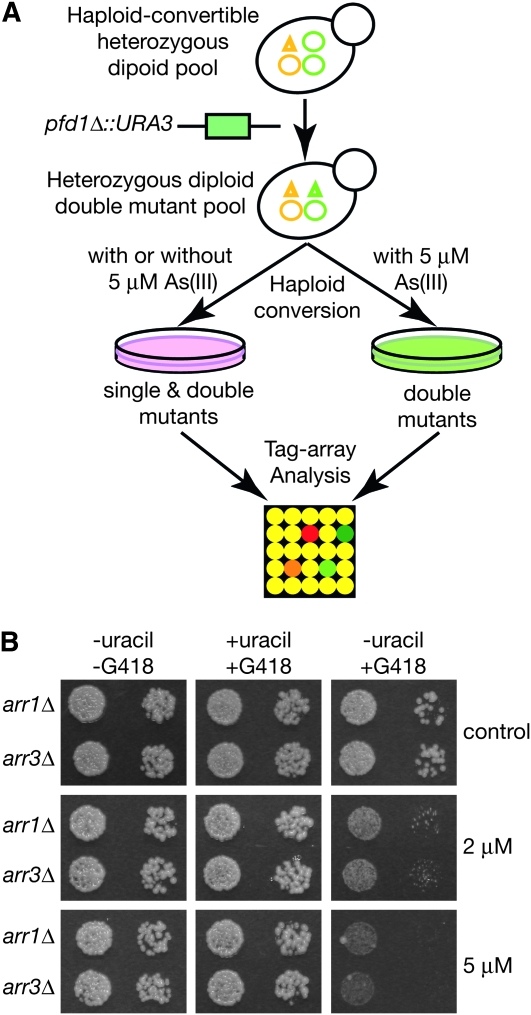Figure 5.—
A genome-wide screen identifies double mutants hypersensitive to low concentrations of arsenic. (A) A high-efficiency pfd1Δ∷URA3 gene disruption cassette was transformed into a pool of haploid-convertible heterozygous diploid yeast knockout mutants. After sporulation, a pool of haploid double knockout mutants were derived from the heterozygous diploid double mutant pool in the presence of 5 μm of As(III). A separate pool of haploid single and double mutants were also similarly derived either in the presence or absence of 5 μm of As(III). Relative representation of each knockout mutation in both pools was compared by TAG-array analysis (Pan et al. 2004). (B) Haploid-convertible ARR1/arr1Δ∷kanMX PFD1/pfd1Δ∷URA3 and ARR3/arr3Δ∷kanMX PFD1/pfd1Δ∷URA3 diploid double mutants were sporulated and spotted on a haploid selection medium that either lacked both uracil and G418 (to select for Ura+ single and double mutants), contained both uracil and G418 (to select for G418-resistant single and double mutants), or lacked uracil but contained G418 (to select for the double mutants). Cell growth under each condition was assessed both in the absence (control) and presence of 2 μm or 5 μm of As(III) and photographed.

